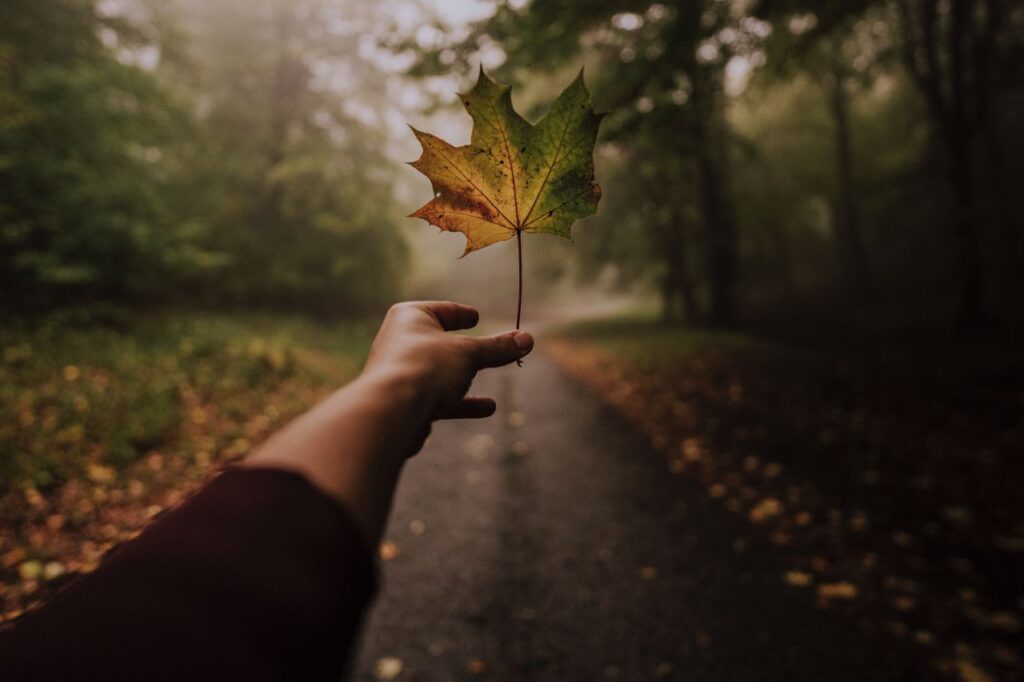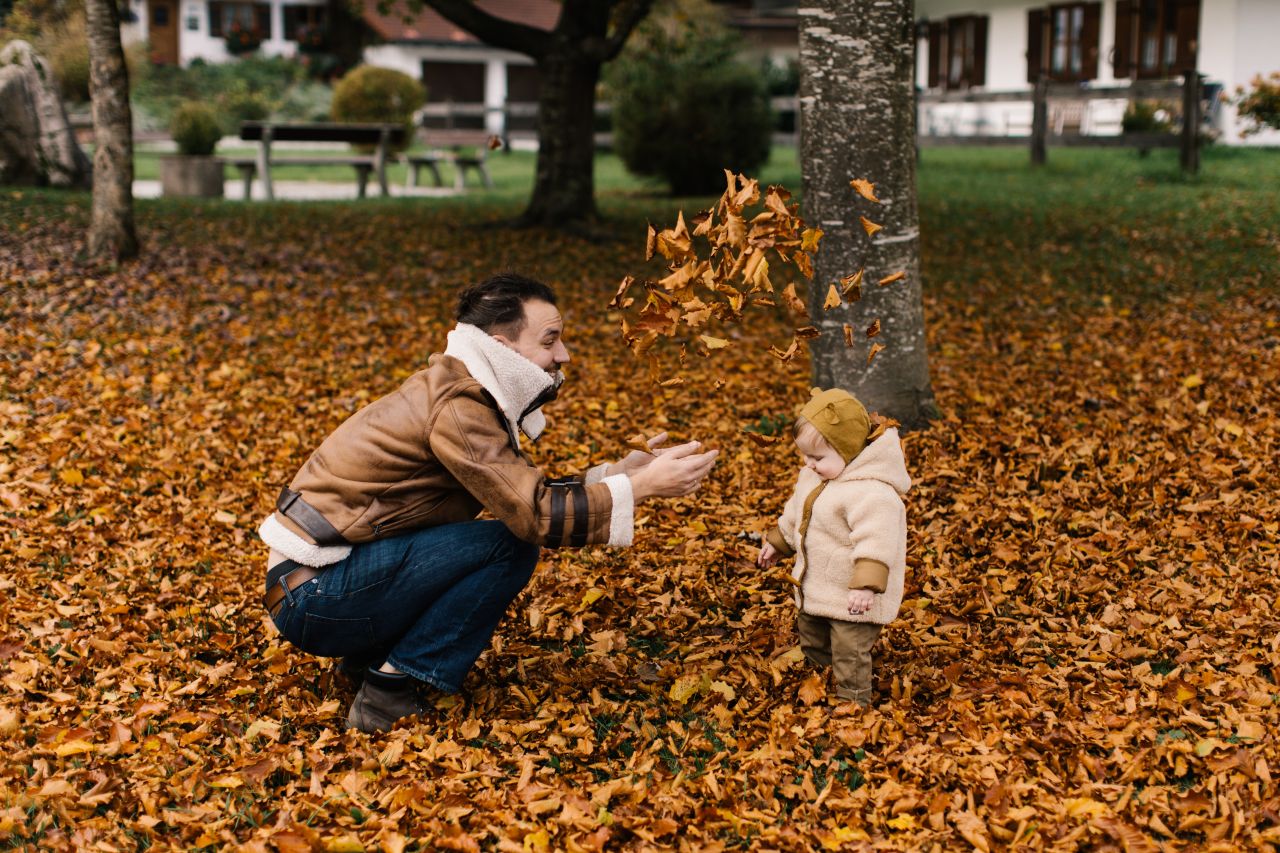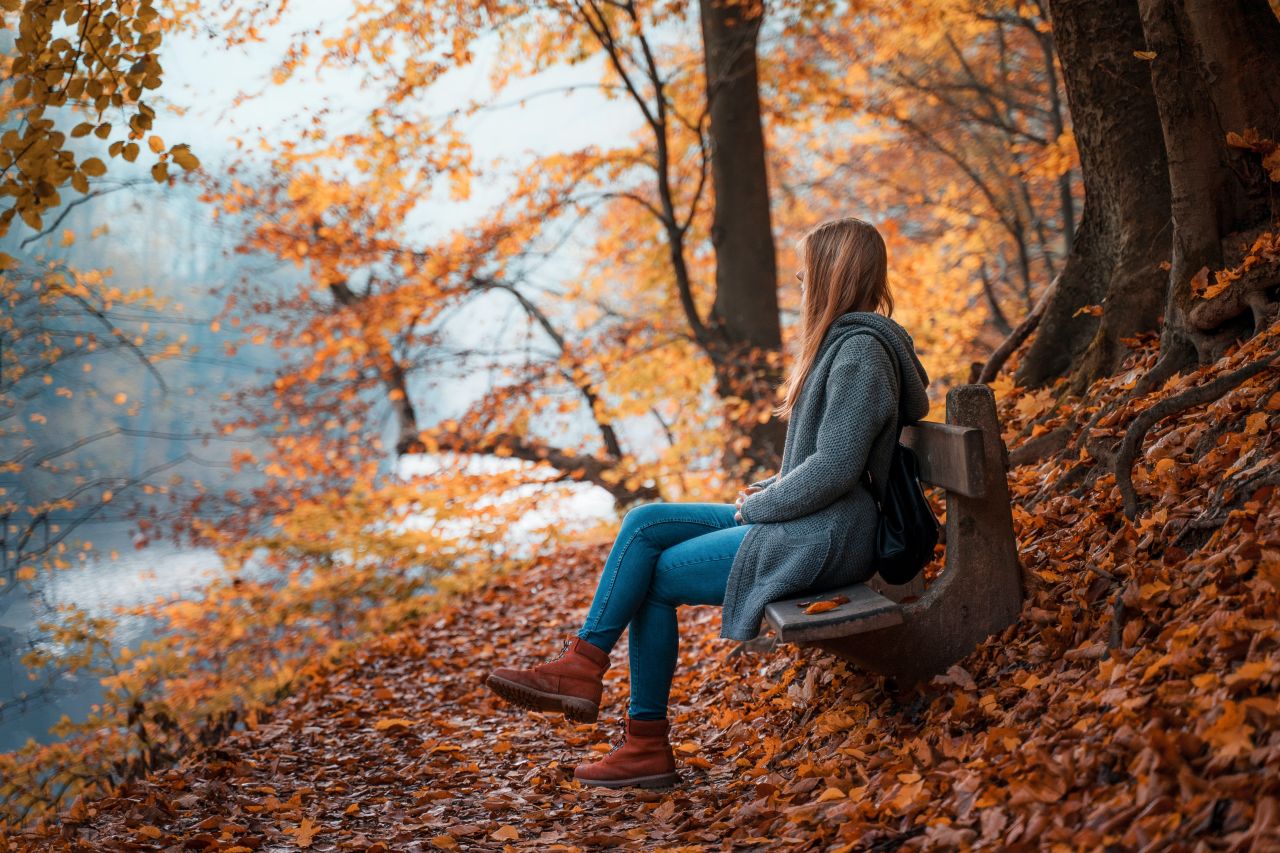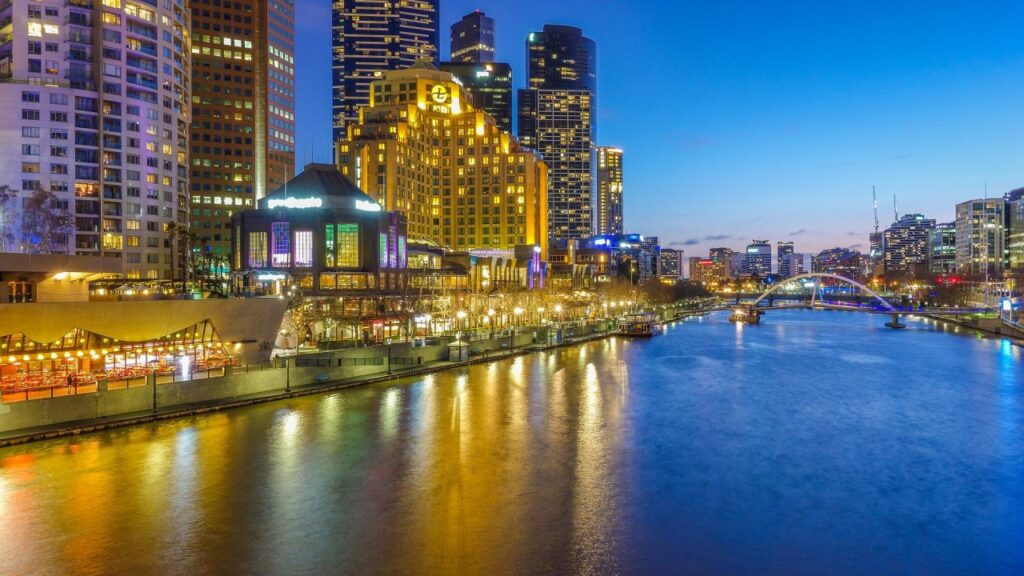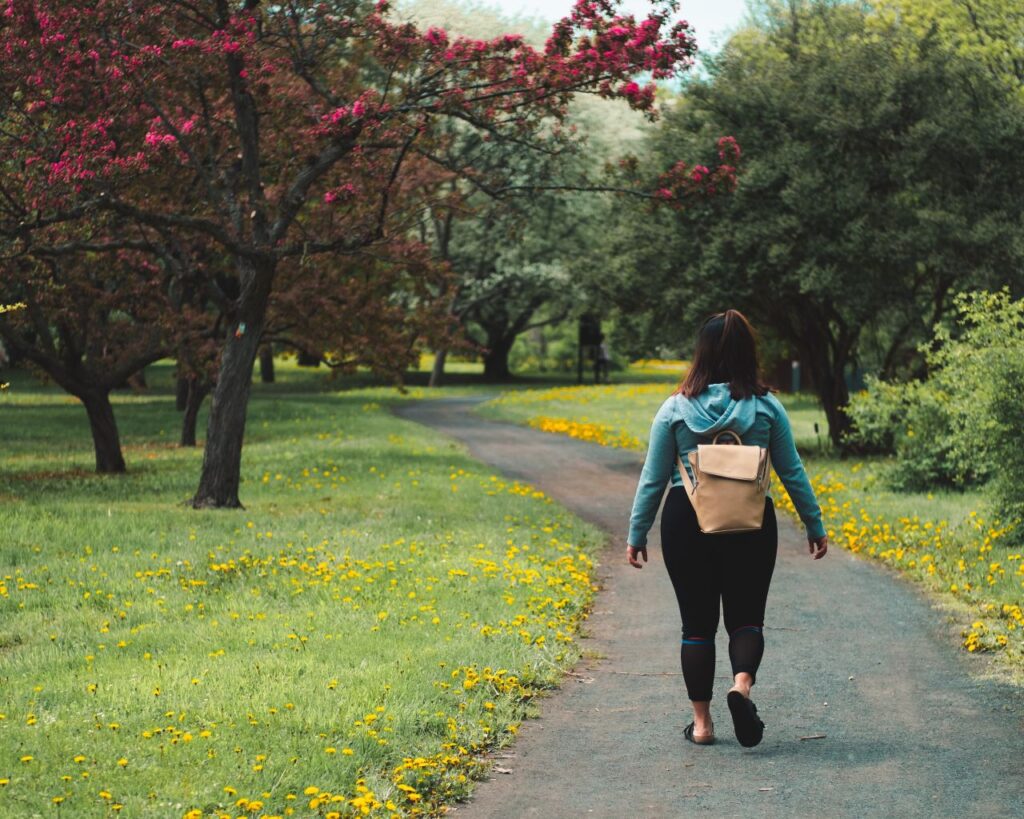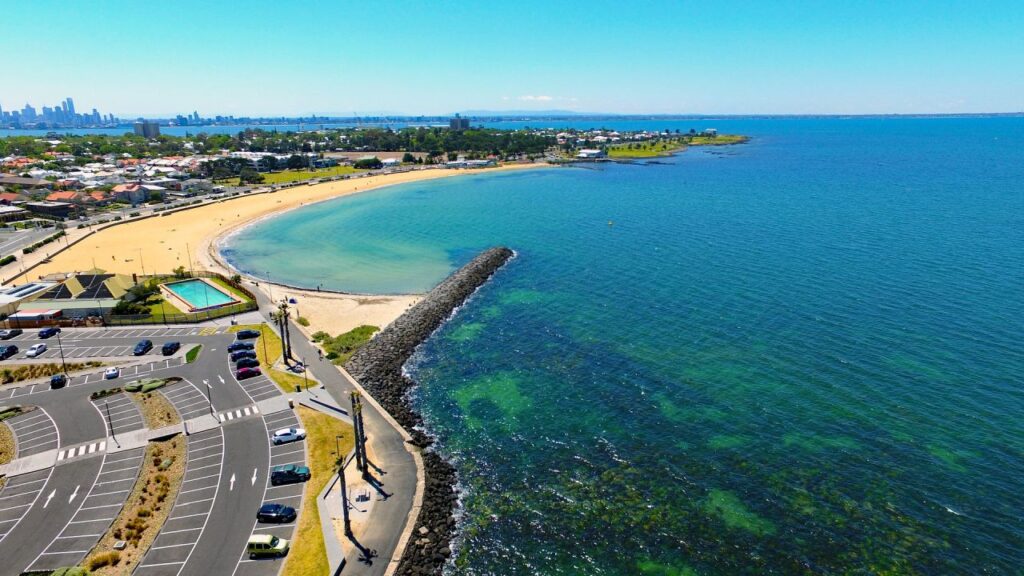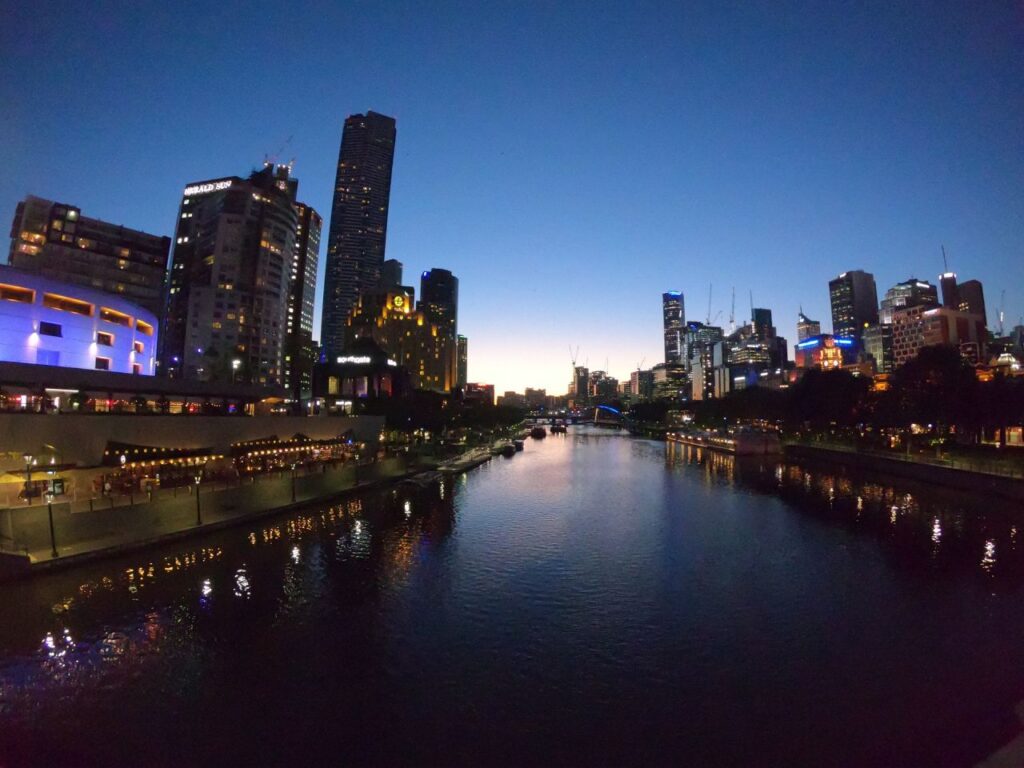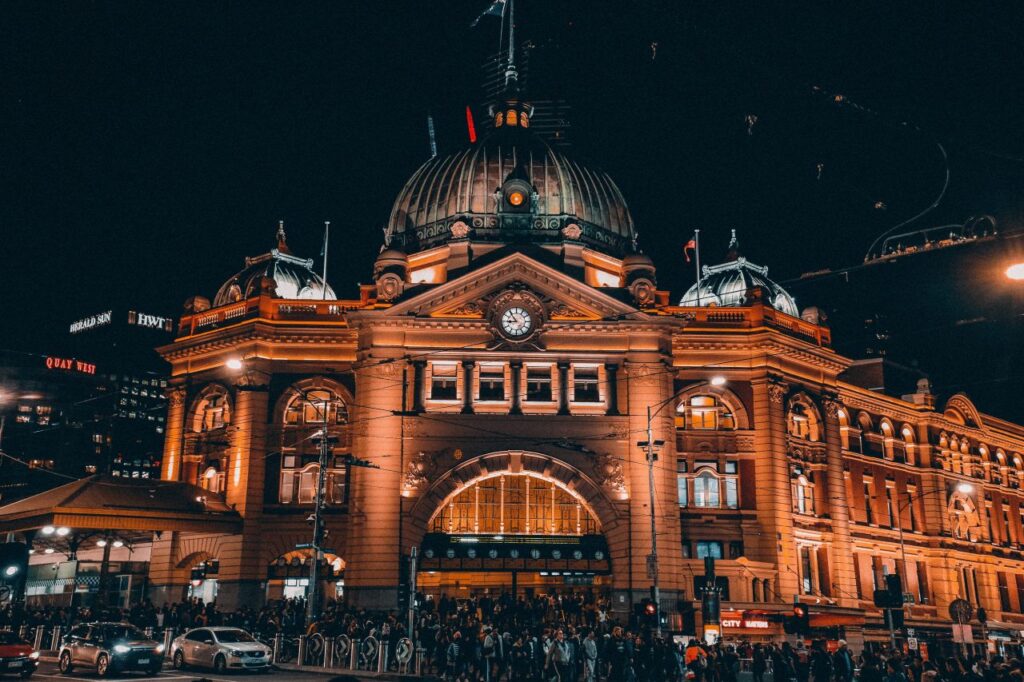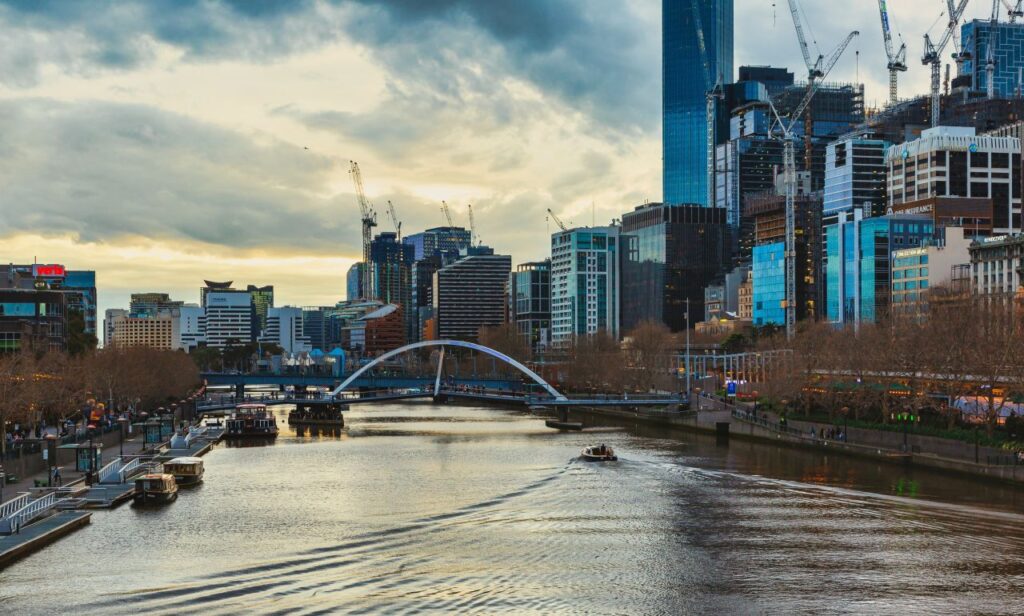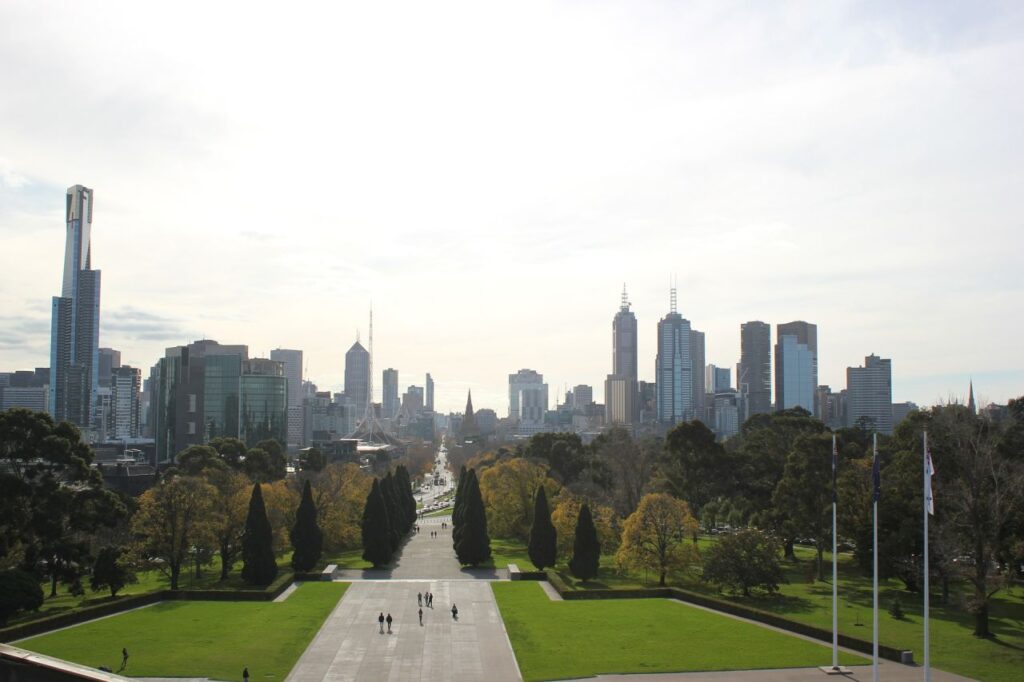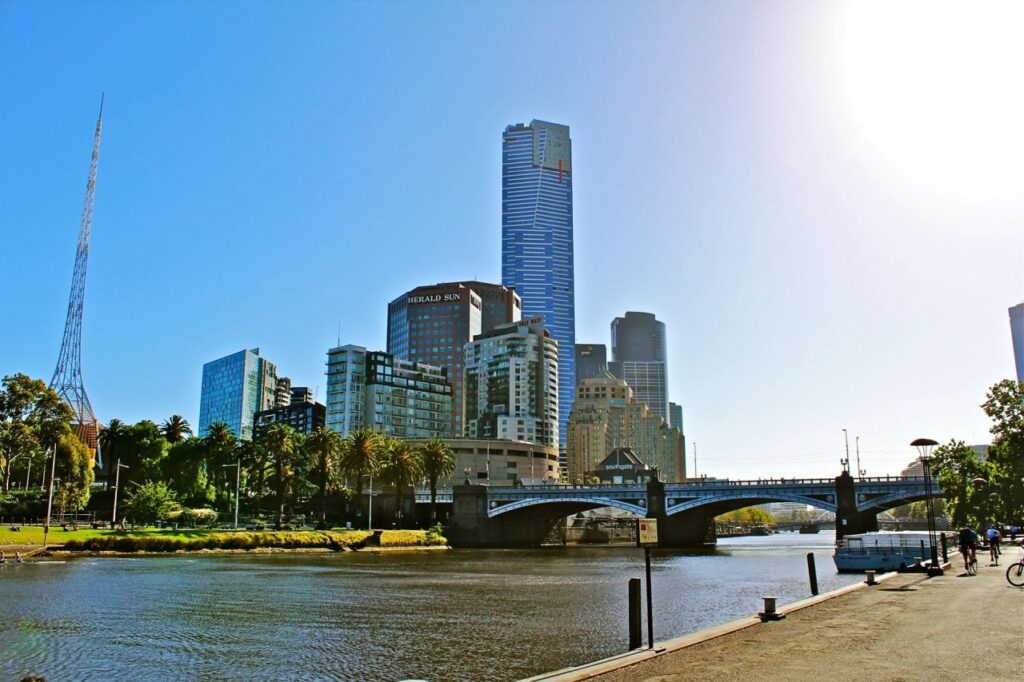While the crisp air and hot beverages of an open fire and hot cocoa may be the most alluring aspects of autumn, the season also brings the satisfying crunch of fallen leaves and the beauty of the changing colours of the trees. Wrap up warm and visit one of these stunning gardens to marvel at the ever-changing floral canvas that is Mother Nature.
Melbourne in the fall is a beautiful sight. For those who prefer a more temperate climate, the weather in Victoria at the moment is perfect.
When compared to our native flora, the European tree species that are commonly planted in Melbourne's and rural Victoria's parks and gardens put on more impressive displays of yellow, orange , and red before their leaves fall in Winter.
One of the nicest things you can do in Melbourne in the fall is to take a stroll through one of the city's many gardens. If you'd like to get away from the city for the day, pack a picnic and drive out to the Dandenong or Macedon ranges. Don't forget your camera!
Here's Autumn Leaves in Melbourne
Since Australia is not well-known for its fall foliage, Victoria does not have any native deciduous trees. Tasmania is home to Australia's lone native deciduous tree in the temperate zone, while the rest of the country is dominated by evergreens.
But the Europeans didn't simply bring coffee and tasty Turkish kebabs to Melbourne; they also brought deciduous trees. Anyone who has lived their entire life surrounded by eucalyptus trees may find the sight of even a single crimson leaf to be quite a spectacle, but British expats may scoff at the thought of fall leaves here in the United States.
North of Melbourne, or at the very least up in the hills where the air is chilly, is where you'll find the greatest autumn foliage; Macedon and Mt. Dandenong are good bets. Put together a picnic and load up the car; these are the top spots in Victoria for seeing the fall leaves.
Alfred Nicholas Memorial Gardens
The gardens were founded in 1933 and were named after Alfred Nicholas, who helped create the painkiller Aspro. The 13-acre property features a mystical waterfall, a dome, a pond covered in moss, sculptures, and a lovely bridge. The picturesque boathouse and beautiful lake, which reflects the brilliant autumn foliage, are a popular photo op for visitors.
The Dandenongs are beautiful in the fall, and you won't even need to travel to a formal garden to appreciate them. Most of the roadways are lined by aspens, maples, and liquid amber. However, the Alfred Nicholas Memorial Gardens stand out from the rest. To reach the parking lot before reaching Sassafras, take the exit on the right.
The gardens are open all year and are free to see (except for Christmas Day). To whom much gratitude is due, Alfred Nicholas, inventor of Aspro pain relievers. The gardens as a whole have stunning fall colour, but if you want that classic autumn postcard photo, stroll down to the ornamental lake and take it from there.
Walhalla Goldfields Railway
With only 20 permanent residents, this gold rush era village in Gippsland is the ideal, peaceful location to see beautiful displays of autumn leaves. Travel through the stunning Stringers Creek Gorge and Happy Creek on the Walhalla Goldfields Railway.
The majority of the train line speeds through autumnal tapestries of colour in April, making that month the greatest time to go. If you'd rather get some exercise, however, the Goldfields Rail Trail is perfect for a hike. You can't go wrong with either one.
Gardens Of Tieve Tara
Fires in 1962 and 1983 wiped up the gardens, rewriting the history of Tieve Tara after they had been established in the 1860s. The 7.5 acre plot has developed into a verdant oasis since then, complete with lakes frequented by Toulouse geese and wild ducks and pristine buildings serving as the property's cornerstones. Virginia creepers, maples, and pin oaks provide beautiful fall colour to the gardens.
The Tieve Tara estate is home to the region's most renowned gardens, earning it the nickname "jewel" of Mount Macedon. Spending the ten dollars to see the pine oaks, aspens, and copper beaches transition at the same time in the fall is money well spent. The leaves fall to the ground, creating a golden carpet that makes for picture-perfect scenery.
The gardens open at 10:30 am, and there are 7.5 acres of grass, lakes, and trees to discover. In high season, the more desirable picnic areas tend to fill up quickly, so you'll want to secure your position as soon as possible. Interesting fact: if you have a couple million dollars laying around, you can buy the entire property.
Tieve Tara Gardens On certain days in the fall and spring, visitors can stroll around the beautiful Gardens of Tieve Tara.
Explore the park-like gardens that span over six acres, unwind by the serene lakes, and keep an eye out for the resident ducks and geese. Learn the garden's history as you go into hidden alleys, smell the roses on the walk, and enjoy a picnic in the cool shade of the old trees. The children's play area is like Treasure Island, and they will love exploring it among the tall Eucalypts.
Park of Botanical Wonders at Wombat Hill
Wombat Hill Botanic Gardens provides stunning vistas of Daylesford from its perch atop an inactive volcano. The gardens are one of the most stunning regional gardens in Victoria, with their wide open lawns and towering conifers and elms that provide welcome shade on hot summer days.
Gardens National Rhododendron
The National Rhododendron Gardens, known across the globe, are a riot of colour throughout the seasons. There are more than 15,000 rhododendrons, 12,000 azaleas, 3,000 camellias, and 250,000 daffodils in these Olinda gardens. The variety of colours and textures in these gardens is complemented by features like deep fern gullies and cherry tree groves.
Cloudehill
Cloudehill is a landscape that celebrates diversity in all its forms, from the fragrant Azalea Steps to the magnificent Peony Pavilion. The garden in the Dandenongs is a blaze of colour when the Yokohama Maples turn red and the decorative grasses turn amber in the fall. The hedges, meadows, and decorative garden beds give Cloudehill its own unique character.
Cloudehill is perched high in the Dandenongs, where the air is crisp and the soil is rich with volcanic loam, 580 metres above sea level (alpine by Melbourne standards). Ideal for planting any type of tree, but particularly European deciduous trees.
The best places to view the fall leaves are along Gallery Walk, just east of the entry, and the Cool Borders, farther south. You can visit the gardens any day of the week between 9 am and 5 pm for only $10. Stretch your legs and then stroll into Olinda for some scones and antiques (or stay put and go full Devonshire in the Cloudehill restaurant). That's as Dandenong as it gets!
Gardens Of Glenlyon
You could easily pass it up if you didn't know better. There isn't much to do in Glenlyon, but the fall foliage is some of the greatest in Victoria. There is a yearly fireworks display down the main drag.
Those travelling to Spa Country would be well served to detour to the Glenlyon General Store for a slice of pie and a stroll in the shade of the trees. When compared to other rest areas, it's a top pick.
Maroondah Reservoir Park
A beautiful English-style garden with both native and exotic plants may be seen in the Yarra Valley at Maroondah Reservoir Park, also known as Maroondah Dam. The Rose Stairway is at its most photogenic in the fall, while the azaleas and rhododendrons are in full bloom in the spring.
You can also see native Australian animals including wallabies, wombats, and echidnas at the park.
This park isn't featured on many "Best of Melbourne" lists, but if you find it, you'll definitely want to keep it to yourself. Located in Healesville, Maroondah Reservoir Park is one of those pristine natural areas that is beautiful no matter the season.
The massive river spillway is often overwhelmed by rushing water during the winter months. In the spring, you may see the azaleas and rhododendrons (try spelling that without Google) at their peak. In the fall, the park's foliage transforms into a psychedelic tapestry of reds and ambers. A helpful hint: charge your iPhone before visiting the Rose Stairway. Absolutely stunning, in every way.
The region now known as Maroondah Reservoir Park was once inhabited by the Wurundjeri people, and it is considered an important cultural landscape in their homeland. Parks Victoria acknowledges the Wurundjeri Traditional Owners' continued responsibility for the care of the Country and values the deep connection they have to these lands and waters.
The elegant gardens, forested slopes, and expansive, tranquil reservoir lake can all be seen from the top of the dam wall, which towers an astonishing 41 metres above ground. This impressive feat of engineering was built between 1920 and 1927, and the Maroondah catchment continues to be an essential supply of water for Melbourne today. The gardens feature the original, classically-styled domes of the valve houses.
The gardens, which were added piece by piece after the wall was finished, feature a sundial and a stone-paved Rose Stairway surrounded by rose bushes and Golden Pencil Pines. Numerous exotic deciduous trees with stunning Autumn colours stand tall among the gardens' native towering eucalypts. Enjoy a picnic and some outside time in the park's open grassy sections or old eucalyptus groves.
Guests can make use of the park's six rotundas, shelter, and barbeques (both gas and electric), as well as the picnic tables dotted throughout the grounds. The Hendersons Picnic Area area near the Watt's River Rotunda is a good choice if you're seeking peace and quiet.
There are a variety of strolls that range from mild to strenuous that you can do while you're here. The Maroondah Forest Track is a short trek through the woods that should come first. The Henderson's Hill Track continues up the hill for another 1.4 kilometres if you'd want to extend your trek. You can continue your hike to Donnellys Weir in Yarra Ranges National Park from here if you choose.
If cycling is more your speed, you can make the crossing from the dam wall to Donnellys Weir, and then climb the steep slopes of Mount St. Leonard, where the Bicentennial National Trail begins.
You can see the dam's majesty from below by taking a stroll to its base, and then go across the top of the dam to take in the expansive reservoir and parks from above by ascending the Rose Steps (or using the round route to avoid the stairs).
The Falls Lookout is the ideal place to take in the cascade, but it's only open twice a year, when the dam breaches across the spillway. Water can fall over the lower rockface whenever Melbourne Water opens the dam at random through the lower outflow.
The cascade created by the spillway in action is quite spectacular. If the Melbourne Water dam levels website shows that the dam is at 100% capacity, water is likely to be rushing into the spillway and over the falls. Keep an eye on Parks Victoria's social media pages (Facebook and Twitter).
Carlton Gardens
The Carlton Gardens are the location of the Melbourne Museum, the IMAX Theater, and the Royal Exhibition Building, all of which were constructed for the Melbourne International Exhibition in 1880. Flowerbeds, Moreton Bay fig trees, palms, and elm-lined avenues dot the 64-acre property, which also contains two attractive lakes and three ornate fountains, such as the French Fountain and Hochgurtel Fountain.
The Valley Of Liquidambers
What a great name, huh? Just so you know, liquidambars are a type of American sweetgum that, as their name implies, are especially attractive in the fall months. Many Melburnians don't think to visit Heathcote on a day trip, but they really should.
The food is delicious, there are vineyards on every corner, and the foliage of the hills is breathtaking in the fall, particularly in the Valley. Located in the middle of town, right next to McIvor Creek. The ideal location for a picnic.
Fitzroy Gardens
Lunchtime in Fitzroy Gardens is a terrific way to see autumn without venturing too far from the centre of the city. The massive elm trees that line the walks of these gardens just outside the central business district put on a beautiful show of fall foliage every year, earning the location official historic site status. Walk about in the gardens that span 26 hectares, or remain for a picnic in the open air.
The park that is today known as Fitzroy Gardens was first opened to the public in 1848. The scenery is quite rich and detailed, evoking a traditional Victorian aesthetic. Garden features and colourful flora compliment expansive lawns and winding paths flanked by tall elm trees.
Stunning floral displays may be found in the old Cooks' Cottage and the Conservatory, both of which are styled after Spanish missions. A miniature Tudor village and a sculpted tree, the Fairies' Tree, round out the collection of fountains, statues, and other decorative elements.
Visit the Fitzroy Gardens Information Centre to purchase Cooks' Cottage tickets and find out more about the sights in the neighbourhood.
Castlemaine Botanical Gardens
The National Trust has listed an oak that was planted in 1867 by the Duke of Edinburgh at Castlemaine Botanical Gardens, which were designed by the renowned botanist Baron Sir Ferdinand von Mueller.
The groomed gardens feature a decorative lake that is a perfect mirror for the bright yellow leaves of autumn.
Coolart Historic Area At Somers
The historical mansion of Coolart is located in a beautiful garden just over an hour from Melbourne, with neighbouring wetlands, woodlands, and pasture. The Homestead grounds are ideal for a relaxing picnic, while the nearby beach, lagoon, and wetlands may be reached via the park's network of walking paths.
Since the brilliant colours of the leaves change to all the colours of nature in the fall, this is the most beautiful time to visit.
Royal Botanic Gardens
Obviously, the Royal Botanic Gardens wouldn't be forgotten. Within the gardens' 50,000 plants and 6,000 tree species, an entire spectrum of autumnal colours will emerge during the month of March.
The gardens are stunning at any time of year, but during the fall when the leaves are changing colours is when they truly shine. The Oak Lawn is where you'll discover the greatest quantity of fallen leaves and the most picturesque backdrops.
The Royal Botanic Gardens Victoria, Melbourne Gardens has been a staple of Melbourne's cultural landscape for almost 170 years. It's a great tourist attraction and a useful resource for education, scientific enquiry, and horticultural practise.
More than 8,500 plant species from all around the world have made their home in Melbourne Gardens, which spans 38 hectares. Notable collections include those of camellias, rainforest flora, cactus and succulents, roses, California species, herbs, perennials, cycads, plants from Southern China, and the Rare and Threatened Species Collection, which focuses on species unique to south-eastern Australia.
Dandenong Ranges
A short 35-kilometer drive east of Melbourne will bring you to the Dandenong Ranges, where seven stunning gardens may be discovered. Amidst the magnificent hills and views of the Dandenongs, each garden displays stunning blazing colours.
The gardens are free and open to the public every day and are less than an hour's drive from the city. Come enjoy the boutique accommodations at A Loft in the Mill. a lovely carriage house and flour mill constructed of bluestone in the style of the Tudor period. Olinda, right in the middle of the Dandenongs, is where you'll find them.
Many of the suites at this hotel have fireplaces and feature unique design. There's a continental breakfast basket waiting for you in the morning. Just right for a couple's weekend escape.
Lake Daylesford
The 1929-constructed Lake Daylesford serves as a perfect setting for some R&R. Along the route that goes all the way around the lake, you'll see mature trees that turn brilliant colours of amber and ruby in the fall. The Lake House is a luxury residence with a prime location on the lake's shores and breathtaking vistas.
Take a trip out to the pier for sweeping vistas of the lake and to keep an eye out for local avian residents.
Seawinds Gardens At Arthurs Seat
Guests can explore the area on foot via a path network that winds through both man-made and wild landscapes. The garden's collection of sculptures and the breathtaking view of Port Phillip Bay make it a popular tourist spot.
The 34-hectare Seawinds Gardens in Arthurs Seat State Park are located on the Mornington Peninsula, about an hour and fifteen minutes from Melbourne.
Conclusion
For those who prefer a more temperate climate, the weather in Victoria at the moment is perfect. European tree species that are commonly planted in Melbourne's and rural Victoria's parks and gardens put on more impressive displays of yellow, orange, and red before their leaves fall in Winter. The Tieve Tara estate is home to the region's most renowned gardens, earning it the nickname "jewel" of Mount Macedon. Travel through the stunning Stringers Creek Gorge and Happy Creek on the Walhalla Goldfields Railway. The autumn foliage makes for picture-perfect scenery.
Wombat Hill Botanic Gardens are perched atop an inactive volcano. Cloudehill is perched high in the Dandenongs, 580 metres above sea level (alpine by Melbourne standards). The National Rhododendron Gardens are a riot of colour throughout the seasons. Maroondah Reservoir Park is one of those pristine natural areas that is beautiful no matter the season. The Rose Stairway is at its most photogenic in the fall, while the azaleas and rhododendrons are in full bloom in the spring.
The Carlton Gardens are the location of the Melbourne Museum, the IMAX Theater, and the Royal Exhibition Building. The Victoria Falls Lookout is the ideal place to take in the cascade, but it's only open twice a year when the dam breaches across the spillway. The National Trust has listed an oak that was planted in 1867 by the Duke of Edinburgh at Castlemaine Botanical Gardens. The historical mansion of Coolart is located in a beautiful garden just over an hour from Melbourne, with neighbouring wetlands, woodlands, and pasture. The Royal Botanic Gardens.
Victoria, Melbourne Gardens has been a staple of Melbourne's cultural landscape for almost 170 years. The Oak Lawn is where you'll find the greatest quantity of fallen leaves and the most picturesque backdrops. Dandenong Ranges are less than an hour's drive from the city. Olinda Hotel is a lovely carriage house and flour mill constructed of bluestone in the style of the Tudor period. The 34-hectare Seawinds Gardens in Arthurs Seat State Park are located on the Mornington Peninsula, about an hour and fifteen minutes from Melbourne.
Content Summary:
- While the crisp air and hot beverages of an open fire and hot cocoa may be the most alluring aspects of autumn, the season also brings the satisfying crunch of fallen leaves and the beauty of the changing colours of the trees.
- Wrap up warm and visit one of these stunning gardens to marvel at the ever-changing floral canvas that is Mother Nature.
- Melbourne in the fall is a beautiful sight.
- For those who prefer a more temperate climate, the weather in Victoria at the moment is perfect.
- When compared to our native flora, the European tree species that are commonly planted in Melbourne's and rural Victoria's parks and gardens put on more impressive displays of yellow, orange , and red before their leaves fall in Winter.
- One of the nicest things you can do in Melbourne in the fall is to take a stroll through one of the city's many gardens.
- If you'd like to get away from the city for the day, pack a picnic and drive out to the Dandenong or Macedon ranges.
- Don't forget your camera!Here's Autumn Leaves in Melbourne Since Australia is not well-known for its fall foliage, Victoria does not have any native deciduous trees.
- Tasmania is home to Australia's lone native deciduous tree in the temperate zone, while the rest of the country is dominated by evergreens.
- But the Europeans didn't simply bring coffee and tasty Turkish kebabs to Melbourne; they also brought deciduous trees.
- Anyone who has lived their entire life surrounded by eucalyptus trees may find the sight of even a single crimson leaf to be quite a spectacle, but British expats may scoff at the thought of fall leaves here in the United States.
- North of Melbourne, or at the very least up in the hills where the air is chilly, is where you'll find the greatest autumn foliage; Macedon and Mt. Dandenong are good bets.
- Put together a picnic and load up the car; these are the top spots in Victoria for seeing the fall leaves.
- The gardens were founded in 1933 and were named after Alfred Nicholas, who helped create the painkiller Aspro.
- The Dandenongs are beautiful in the fall, and you won't even need to travel to a formal garden to appreciate them.
- Most of the roadways are lined by aspens, maples, and liquid amber.
- However, the Alfred Nicholas Memorial Gardens stand out from the rest.
- To reach the parking lot before reaching Sassafras, take the exit on the right.
- The gardens are open all year and are free to see (except for Christmas Day).
- To whom much gratitude is due, Alfred Nicholas, inventor of Aspro pain relievers.
- The gardens as a whole have stunning fall colour, but if you want that classic autumn postcard photo, stroll down to the ornamental lake and take it from there.
- With only 20 permanent residents, this gold rush era village in Gippsland is the ideal, peaceful location to see beautiful displays of autumn leaves.
- Travel through the stunning Stringers Creek Gorge and Happy Creek on the Walhalla Goldfields Railway.
- The majority of the train line speeds through autumnal tapestries of colour in April, making that month the greatest time to go.
- If you'd rather get some exercise, however, the Goldfields Rail Trail is perfect for a hike.
- Tara Fires in 1962 and 1983 wiped up the gardens, rewriting the history of Tieve Tara after they had been established in the 1860s.
- The 7.5 acre plot has developed into a verdant oasis since then, complete with lakes frequented by Toulouse geese and wild ducks and pristine buildings serving as the property's cornerstones.
- Virginia creepers, maples, and pin oaks provide beautiful fall colour to the gardens.
- The Tieve Tara estate is home to the region's most renowned gardens, earning it the nickname "jewel" of Mount Macedon.
- Spending the ten dollars to see the pine oaks, aspens, and copper beaches transition at the same time in the fall is money well spent.
- The gardens open at 10:30 am, and there are 7.5 acres of grass, lakes, and trees to discover.
- On certain days in the fall and spring, visitors can stroll around the beautiful Gardens of Tieve Tara.
- Explore the park-like gardens that span over six acres, unwind by the serene lakes, and keep an eye out for the resident ducks and geese.
- Learn the garden's history as you go into hidden alleys, smell the roses on the walk, and enjoy a picnic in the cool shade of the old trees.
- The children's play area is like Treasure Island, and they will love exploring it among the tall Eucalypts.
- Park of Botanical Wonders at Wombat Hill Wombat Hill Botanic Gardens provides stunning vistas of Daylesford from its perch atop an inactive volcano.
- The gardens are one of the most stunning regional gardens in Victoria, with their wide open lawns and towering conifers and elms that provide welcome shade on hot summer days.
- The National Rhododendron Gardens, known across the globe, are a riot of colour throughout the seasons.
- There are more than 15,000 rhododendrons, 12,000 azaleas, 3,000 camellias, and 250,000 daffodils in these Olinda gardens.
- Cloudehill Cloudehill is a landscape that celebrates diversity in all its forms, from the fragrant Azalea Steps to the magnificent Peony Pavilion.
- The garden in the Dandenongs is a blaze of colour when the Yokohama Maples turn red and the decorative grasses turn amber in the fall.
- The hedges, meadows, and decorative garden beds give Cloudehill its own unique character.
- Cloudehill is perched high in the Dandenongs, where the air is crisp and the soil is rich with volcanic loam, 580 metres above sea level (alpine by Melbourne standards).
- Ideal for planting any type of tree, but particularly European deciduous trees.
- The best places to view the fall leaves are along Gallery Walk, just east of the entry, and the Cool Borders, farther south.
- There is a yearly fireworks display down the main drag.
- Those travelling to Spa Country would be well served to detour to the Glenlyon General Store for a slice of pie and a stroll in the shade of the trees.
- When compared to other rest areas, it's a top pick.
- A beautiful English-style garden with both native and exotic plants may be seen in the Yarra Valley at Maroondah Reservoir Park, also known as Maroondah Dam.
- The Rose Stairway is at its most photogenic in the fall, while the azaleas and rhododendrons are in full bloom in the spring.
- You can also see native Australian animals including wallabies, wombats, and echidnas at the park.
- This park isn't featured on many "Best of Melbourne" lists, but if you find it, you'll definitely want to keep it to yourself.
- Located in Healesville, Maroondah Reservoir Park is one of those pristine natural areas that is beautiful no matter the season.
- The massive river spillway is often overwhelmed by rushing water during the winter months.
- In the fall, the park's foliage transforms into a psychedelic tapestry of reds and ambers.
- A helpful hint: charge your iPhone before visiting the Rose Stairway.
- Absolutely stunning, in every way.
- The region now known as Maroondah Reservoir Park was once inhabited by the Wurundjeri people, and it is considered an important cultural landscape in their homeland.
- Parks Victoria acknowledges the Wurundjeri Traditional Owners' continued responsibility for the care of the Country and values the deep connection they have to these lands and waters.
- The elegant gardens, forested slopes, and expansive, tranquil reservoir lake can all be seen from the top of the dam wall, which towers an astonishing 41 metres above ground.
- This impressive feat of engineering was built between 1920 and 1927, and the Maroondah catchment continues to be an essential supply of water for Melbourne today.
- Guests can make use of the park's six rotundas, shelter, and barbeques (both gas and electric), as well as the picnic tables dotted throughout the grounds.
- The Hendersons Picnic Area area near the Watt's River Rotunda is a good choice if you're seeking peace and quiet.
- There are a variety of strolls that range from mild to strenuous that you can do while you're here.
- The Maroondah Forest Track is a short trek through the woods that should come first.
- The Henderson's Hill Track continues up the hill for another 1.4 kilometres if you'd want to extend your trek.
- You can continue your hike to Donnellys Weir in Yarra Ranges National Park from here if you choose.
- If cycling is more your speed, you can make the crossing from the dam wall to Donnellys Weir, and then climb the steep slopes of Mount St. Leonard, where the Bicentennial National Trail begins.
- You can see the dam's majesty from below by taking a stroll to its base, and then go across the top of the dam to take in the expansive reservoir and parks from above by ascending the Rose Steps (or using the round route to avoid the stairs).
- The Falls Lookout is the ideal place to take in the cascade, but it's only open twice a year, when the dam breaches across the spillway.
- Water can fall over the lower rockface whenever Melbourne Water opens the dam at random through the lower outflow.
- The cascade created by the spillway in action is quite spectacular.
- If the Melbourne Water dam levels website shows that the dam is at 100% capacity, water is likely to be rushing into the spillway and over the falls.
- Keep an eye on Parks Victoria's social media pages (Facebook and Twitter).
- Carlton Gardens The Carlton Gardens are the location of the Melbourne Museum, the IMAX Theater, and the Royal Exhibition Building, all of which were constructed for the Melbourne International Exhibition in 1880.
- Flowerbeds, Moreton Bay fig trees, palms, and elm-lined avenues dot the 64-acre property, which also contains two attractive lakes and three ornate fountains, such as the French Fountain and Hochgurtel Fountain.
- The food is delicious, there are vineyards on every corner, and the foliage of the hills is breathtaking in the fall, particularly in the Valley.
- Located in the middle of town, right next to McIvor Creek.
- The ideal location for a picnic.
- Lunchtime in Fitzroy Gardens is a terrific way to see autumn without venturing too far from the centre of the city.
- The massive elm trees that line the walks of these gardens just outside the central business district put on a beautiful show of fall foliage every year, earning the location official historic site status.
- Walk about in the gardens that span 26 hectares, or remain for a picnic in the open air.
- The park that is today known as Fitzroy Gardens was first opened to the public in 1848.
- The scenery is quite rich and detailed, evoking a traditional Victorian aesthetic.
- Garden features and colourful flora compliment expansive lawns and winding paths flanked by tall elm trees.
- Stunning floral displays may be found in the old Cooks' Cottage and the Conservatory, both of which are styled after Spanish missions.
- A miniature Tudor village and a sculpted tree, the Fairies' Tree, round out the collection of fountains, statues, and other decorative elements.
- Visit the Fitzroy Gardens Information Centre to purchase Cooks' Cottage tickets and find out more about the sights in the neighbourhood.
- Castlemaine Botanical Gardens The National Trust has listed an oak that was planted in 1867 by the Duke of Edinburgh at Castlemaine Botanical Gardens, which were designed by the renowned botanist Baron Sir Ferdinand von Mueller.
- The groomed gardens feature a decorative lake that is a perfect mirror for the bright yellow leaves of autumn.
- Coolart Historic Area At Somers The historical mansion of Coolart is located in a beautiful garden just over an hour from Melbourne, with neighbouring wetlands, woodlands, and pasture.
- The Homestead grounds are ideal for a relaxing picnic, while the nearby beach, lagoon, and wetlands may be reached via the park's network of walking paths.
- Since the brilliant colours of the leaves change to all the colours of nature in the fall, this is the most beautiful time to visit.
- The gardens are stunning at any time of year, but during the fall when the leaves are changing colours is when they truly shine.
- The Oak Lawn is where you'll discover the greatest quantity of fallen leaves and the most picturesque backdrops.
- The Royal Botanic Gardens Victoria, Melbourne Gardens has been a staple of Melbourne's cultural landscape for almost 170 years.
- It's a great tourist attraction and a useful resource for education, scientific enquiry, and horticultural practise.
- More than 8,500 plant species from all around the world have made their home in Melbourne Gardens, which spans 38 hectares.
- Notable collections include those of camellias, rainforest flora, cactus and succulents, roses, California species, herbs, perennials, cycads, plants from Southern China, and the Rare and Threatened Species Collection, which focuses on species unique to south-eastern Australia.
- Dandenong Ranges A short 35-kilometer drive east of Melbourne will bring you to the Dandenong Ranges, where seven stunning gardens may be discovered.
- Amidst the magnificent hills and views of the Dandenongs, each garden displays stunning blazing colours.
- The gardens are free and open to the public every day and are less than an hour's drive from the city.
- Come enjoy the boutique accommodations at A Loft in the Mill.
- a lovely carriage house and flour mill constructed of bluestone in the style of the Tudor period.
- Olinda, right in the middle of the Dandenongs, is where you'll find them.
- Many of the suites at this hotel have fireplaces and feature unique design.
- There's a continental breakfast basket waiting for you in the morning.
- Just right for a couple's weekend escape.
- The 1929-constructed Lake Daylesford serves as a perfect setting for some R&R. Along the route that goes all the way around the lake, you'll see mature trees that turn brilliant colours of amber and ruby in the fall.
- The Lake House is a luxury residence with a prime location on the lake's shores and breathtaking vistas.
- Take a trip out to the pier for sweeping vistas of the lake and to keep an eye out for local avian residents.
- Guests can explore the area on foot via a path network that winds through both man-made and wild landscapes.
- The garden's collection of sculptures and the breathtaking view of Port Phillip Bay make it a popular tourist spot.
- The 34-hectare Seawinds Gardens in Arthurs Seat State Park are located on the Mornington Peninsula, about an hour and fifteen minutes from Melbourne.
FAQs About Autumn Leaves In Melbourne
Autumn is one of the most beautiful seasons, with deciduous leaves changing colour to autumn's warm, crackly colours before dropping to the ground. So if you're keen to make the most of these fleeting seasons, here are the best parks and gardens in Victoria for you to visit to see the changing leaves.
You won’t have to travel far to enjoy Melbourne in its full Autumn glory; just take a stroll through many of the city’s gardens. Or, if you fancy a day out-of-town, pack a picnic, drive up to the hills of the Dandenong or Macedon ranges for the perfect day out. Don’t forget your camera!
Stay at the Seasons Botanic Gardens Melbourne – Just a stone's throw from the Royal Botanic Gardens, with a view of the Shrine of Remembrance and all of the Melbourne autumn colour. Located on St Kilda Road, this hotel with self-contained apartments is within walking distance from the NGV, Tennis Center and CBD.
Autumn (March – May)
Autumn sees cooler weather with average temperatures ranging from 10.9 – 20.3°C (51.6 - 68.5°F).
As far as timing goes, autumn leaves in Australia start to appear in early March, but the thick orange foliage you're after is best enjoyed from late March to early May, depending on the local climate.

